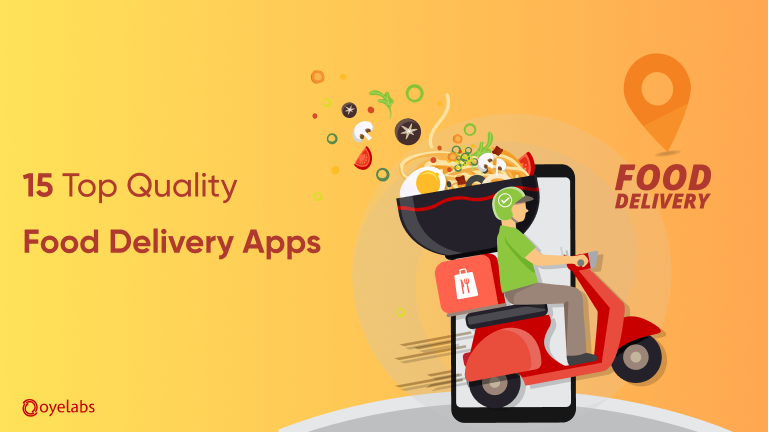The Food Service Industry Diaries

The food service sector has experienced explosive growth in the past few years, driven by growing demand for effortless on-demand services. With platforms like Uber Eats and DoorDash transforming the way consumers request meals, the focus has moved to developing cutting-edge food delivery apps. These apps provide customers the option to order food from their favorite restaurants and have it delivered directly to their location. For businesses, the task is to leverage technology to enhance delivery logistics and ensure a seamless customer experience.
Building the Perfect Food Delivery App
Developing a profitable food delivery app demands a thorough understanding of the industry shifts and operational strategies that dominate the sector. Whether building a full-stack delivery solution or concentrating on niche markets like ghost kitchens or cloud kitchens, the app’s functionality needs to cater to both customers and restaurants. Key features such as real-time order monitoring, efficiency improvement, and customer satisfaction metrics play a vital role in ensuring customer loyalty.
Restaurant Delivery Partnerships: A Winning Strategy
Eateries are increasingly establishing partnerships with delivery platforms to expand their market penetration. These agreements help restaurants provide to a wider customer base while reducing the challenges of managing their in-house delivery services. The effectiveness of such collaborations hinges upon technological synchronization, which enhances the user interface design and enhances the customer experience. Through these partnerships, restaurants can boost customer loyalty and make sure that they stay relevant in a saturated market.
How KPIs Drive Food Delivery Profitability
For any enterprise, knowing its key performance indicators (KPIs) is crucial to maintaining financial health. In the food delivery industry, KPIs such as delivery time, precision in orders, and user happiness are essential. Measuring and optimizing these KPIs allows delivery services to offer a superior customer experience. Additionally, keeping an eye on profitability helps companies streamline operations, reduce charges, and improve overall efficiency.
Customer Satisfaction and User Retention Strategies
A major factor in the success of food delivery platforms is their ability to keep customers through outstanding customer service. Offering fast food Discover more delivery and resolving user feedback quickly can assist companies enhance their service delivery. In addition, introducing loyalty programs and providing incentives like no-cost delivery can enhance user retention. Customer satisfaction can be additionally strengthened by maintaining quality assurance and offering a smooth order management system.
The Role of Technology in Food Delivery
Technology is at the heart of modern food delivery solutions, helping companies refine their operations and deliver a seamless customer experience. From mobile app development Competitive Edge in Food Delivery to real-time order monitoring, tech integration plays a significant role in the success of delivery platforms. The application of data analytics to analyze customer demographics and preferences enables delivery services to offer customized experiences, furthermore enhancing user engagement.
Competitive Analysis in the Food Delivery Market
The delivery sector is fiercely contested, with many players vying for market share. Conducting a competitive analysis enables companies to assess their position in the market and identify chances for growth. Delivery platforms must stand out by offering unique features such as ghost kitchen services, quick service, or specialized cuisine options. Analyzing market share and customer actions enables companies to tailor their services and remain ahead of the rivals.
The Impact of the Pandemic on Food Delivery Services
The COVID-19 pandemic has had a substantial impact on the food delivery industry, boosting its expansion as more people turned to delivery services due to social distancing guidelines. The shift has highlighted the necessity of technological evolution in the food industry, with restaurants rapidly embracing online food ordering and delivery apps. As the world adapts to new routines, delivery services must continue innovating to meet changing consumer demands and secure market expansion.
Investing in Food Delivery Startups
The delivery sector presents plenty of entrepreneurial chances, with investors eager to support companies that provide unique solutions. From creating UberEats clones to developing niche delivery apps, entrepreneurs have a variety of paths to pursue. Investors seek out strong operation plans and the capacity to grow, particularly in aspects like system efficiency, user experience (UX), and tech integration. By focusing on these areas, startups can secure substantial investments and gain a foothold in the industry.
Enhancing Food Delivery Service Profitability and Expansion
Expanding a food delivery service requires a strong foundation built on market penetration, pricing strategies, and service differentiation. As local delivery services expand, businesses should focus on creating a dependable logistical system and maintaining food safety. Furthermore, expanding the menu offerings, forming new collaborations, and integrating advanced technology in food delivery will propel further growth. By constantly enhancing delivery times and ensuring high user happiness, companies can maintain a market lead and increase revenue generation.
These themes provide a complete understanding of the food delivery ecosystem, with a emphasis on key aspects that drive the market forward. Whether you’re a new company or an established business, focusing on these factors will help you thrive in the competitive world of food delivery.